#All of them are equally constructive and destructive
Explore tagged Tumblr posts
Text
uuuuh yeah, i’m a little sick of romance being treated as the only type of love that matters, so yeah, get headcanoned as aro/ace
#Sorry this is largely a reaction to the whole ‘u can’t hc viktor as aro/ace bc disabled people’#Cus it’s treating the actual problem like a monolith#There’s FOR SURE a pattern of disabled characters getting hc’ed as aro/ace#And one should def look deeper into where that hc comes from and if it may or may not be rooted in ableism#THAT BEING SAID if arcane didn’t teach you anything else it should’ve taught you that all types of love are important#And can fuck u up#Love between sisters#Love between a child and their parent#Love between lovers#love between situationships#love between whatever the fuck vik and jayce got going#All of them are equally constructive and destructive#So when i say ‘jayce and vik have smthn going on besides romance’#I fuckin mean it#Is it friendship? Is it romance? It doesn’t fuckin matter#It was so strong it transcended TIME AND SPACE#It fucks WAY harder than regular romance#So yeah fuck you#My boys can in fact be aro/ace AND have a bond that exploded into stars#Without it being labled as ableism without any nuance whatsoever#Arcane#jayvik
24 notes
·
View notes
Text
For half a millennium until the Holocaust, the cosmopolitan city of Thessaloniki, Greece, had a unique claim to fame: it was Europe’s only major city with a Jewish majority.
But the golden age of Thessaloniki’s mostly Sephardic Ladino-speaking Jewish community came to a sudden end with the Nazi occupation of Greece in 1941 and turned cataclysmic with the deportation two years later to Auschwitz of nearly all the city’s Jews. By the end of World War II, some 65,000 Greek Jews — 87% of the total and 96% of those from Thessaloniki — had been killed, leaving barely 2,000 survivors in Thessaloniki (also known as Salonika).
Among them were the parents of Dr. Albert Bourla, a veterinarian who would go on to become the chairman and CEO of Pfizer, one of the world’s largest pharmaceutical companies.
In 2022, Bourla won the Genesis Prize — often described as the Jewish Nobel — for having led the development of Pfizer’s COVID-19 vaccine. Stan Polovets, co-founder and chairman of the Genesis Prize Foundation, said in announcing the reward, “Millions of people are alive and healthy because of what Dr. Bourla and his team at Pfizer have accomplished.”
Now, with global antisemitism at its worst levels since World War II, Bourla is about to realize another milestone: the long-awaited opening of a Holocaust Museum of Greece.
Bourla donated the $1 million Genesis Prize money toward construction of the museum. The museum is also being funded by the Stavros Niarchos Foundation, and the governments of Greece and Germany. The management of the museum is currently trying to raise an additional $10 million.
“Those who know me know that in addition to being very proud of my Jewish heritage, I am equally proud of being Greek,” Bourla said in an emotional June 2022 speech in Jerusalem accepting the Genesis Prize. “My mother’s courage and optimism came from her experience of narrowly escaping death at the hands of the Nazis. In fact, both of my parents turned their experience surviving the Holocaust into something positive and life-affirming. This clearly shaped my worldview.”
The 9,000-square-foot museum occupying eight floors in an octagon-shaped structure will be located at the site of Thessaloniki’s Old Railway Station, where the first Nazi train carrying Jews to Auschwitz departed on March 15, 1943.
But the museum, slated to open in 2026, won’t be just about the tragedy of the Holocaust. Exhibits and artifacts will tell the story of more than 2,300 years of Greek Jewish history in Thessaloniki and 38 other communities, beginning with the ancient Romaniote Jews who settled in Greece during the reign of Alexander the Great.
At an Oct. 29 groundbreaking ceremony in Thessaloniki, Polovets was joined by German President Frank-Walter Steinmeier, Greek President Katerina Sakellaropoulou, and local dignitaries and Holocaust survivors.
“I was honored to participate and was moved by the ceremony, during which President Steinmeier said he ‘felt shame’ and that the memory of what was done to the Jewish people on this site ‘cannot be erased.’ That is why this museum is so important,” Polovets said. “The memory of this once-vibrant Greek Jewish community and its near destruction by the Nazis — especially during the current wave of rising global antisemitism — must never be erased.”
Only about 5,000 Jews remain in Greece: About 4,000 live in Athens, and the remainder live in Thessaloniki, Ioannina, Rhodes, Corfu and other communities. Meanwhile, Greece has not been immune to the wave of antisemitism sweeping Europe. Vandalism of Jewish cemeteries and Holocaust memorials is fairly commonplace.
A 2014 global survey of antisemitism by the Anti-Defamation League found that 69% of Greeks harbor antisemitic views — the highest percentage of any country in the world outside the Middle East. While those findings are sometimes disputed, Greece continues to struggle with antisemitism.
However, physical violence against Greek Jews is extremely rare, and the current Greek government, as well as the one that preceded it, are considered among the most pro-Israel in Europe. Greece observes International Holocaust Remembrance Day, and in 2014 the parliament outlawed Holocaust denial.
A big push for the Holocaust museum came from Thessaloniki’s former mayor, 82-year-old Yiannis Boutaris, who died on Nov. 4, less than a week after the Holocaust museum’s groundbreaking ceremony. Boutaris announced that his city would build the museum at a 2017 event attended by Israeli Prime Minister Benjamin Netanyahu and other dignitaries.
“It will symbolize our shame,” Boutaris said at the time, “for what happened, for what we did, and mostly for what we could not or did not wish to do… during and after the war.”
In addition to Bourla, other famous Jews with roots in Thessaloniki include actor Hank Azaria, Israeli businessman and philanthropist Leon Recanati, his sister the philanthropist Jude Recanati, actress Lea Michele, former Nevada congresswoman Shelley Berkley and Belgian-born American fashion designer Diane von Fürstenberg.
Polovets said Bourla’s donation aligns with the Genesis Prize Foundation’s values and mission of inspiring Jewish pride.
“With the rise of global antisemitism, education will be at the center of the museum’s activities, hosting permanent and temporary exhibitions and archives that will highlight the value of preserving the remembrance of the Holocaust, acceptance and respect for diversity, human rights, and freedom,” he said.
Polovets said he hopes the museum will inspire visitors to fight hatred from spreading today.
“Hatred in any form leads to denial, disrespect and destruction,” he said. “Democracy and respect for others are values that can never be taken for granted, and each of us has a responsibility to stand up to all forms of hatred.”
96 notes
·
View notes
Text
watching a video on Arcane ("how Arcane was always centrist - even before s2") but the definitions early on for different political ideologies is making me appreciate TDP more
For example, right-wing / conservatism is being defined as "it supports maintaining the status quo, and find social inequality and hierarchal society to be inevitable and natural. The right values order, social cohesion, and patriotism. The right is also associated with reactionary politics, which desires to see society revert back to its previous political state / status quo."
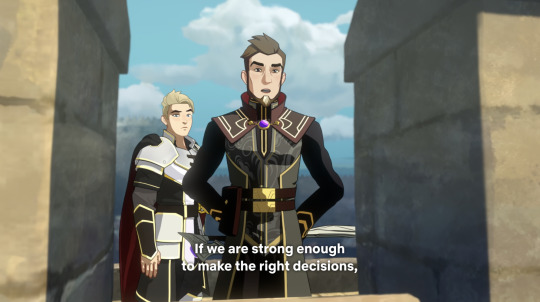
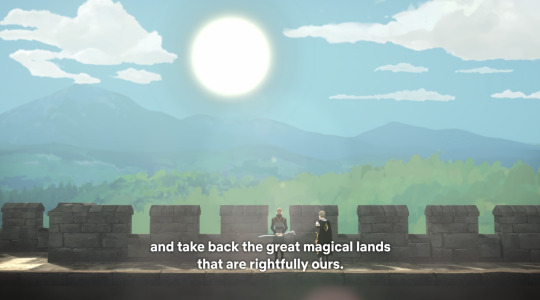
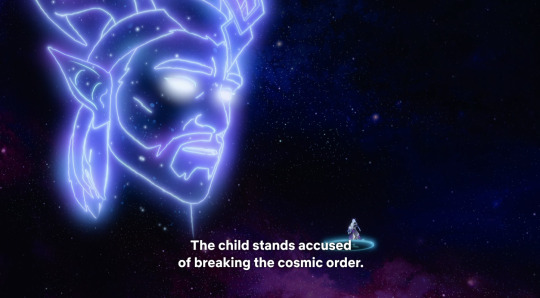

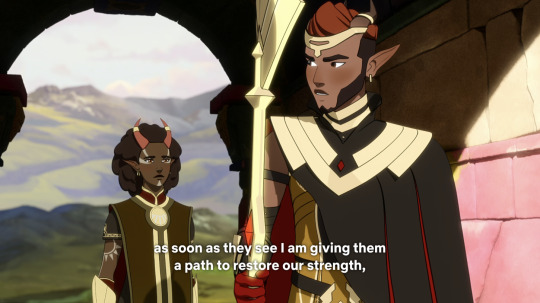
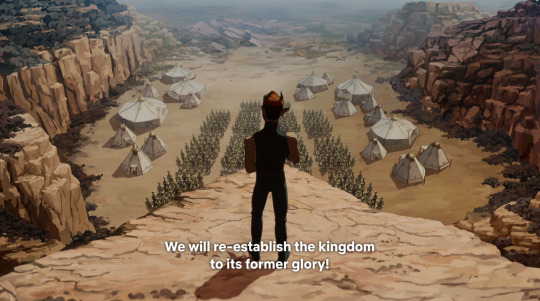
It is worth noting, then, that the status quo in the beginning of TDP is:
Humans are either magic-less or use dark magic
The border is closed/guarded fiercely
Elves and humans live entirely separately and are enemies
Xadia (Runaan) wanted to take the egg of the Dragon Prince back and to kill King Harrow regardless
Meanwhile, "leftism supports and tries to achieve social equality and egalitarianism through making radical changes to society. The left is traditionally associated with revolutionary politics, which support an abrupt, rapid, drastic change in society. This doesn't necessarily have to be combined with progressivism [...] but when I'm talking about revolutions here, I'm discussing revolutions with the purpose of making society more egalitarian."
It is worthwhile, I think, that Rayla immediately defects from Xadia's invasion/assassination of humanity in order to protect and help human princes; she understands that Runaan taking the egg back will not achieve anything meaningful beyond reuniting the prince with his mother, and that more is needed. The trio then assume the responsibility onto their own shoulders. The magic system is also blatantly demonstrated as unfair in S2, even before we know who's responsible beyond 'worldbuilding'. At the same time, the show cautions the idea that killing just one evil/monstrous individual will fix all your problems, or that punitive justice is useful as opposed to more rehabilitative justice / critiquing imprisonment as its own form of violence (great video essay here about prison abolitionist politics in ATLA, or lack thereof).





"One thing that centrism loves is the idea of gradual social change, as opposed to the right's desire for things to stay the same and the left's desire for things to change right here right now. You can think of centrism as the right but more progressive, or the left but more regressive. Centrists support social hierarchy, but with more equal distribution of resources than the right. A big word with centrists is reform, as in reforming institutions rather than abolishing them, as a leftist would say."
While TDP does emphasize that rebuilding from loss and changing the world takes decades of work, that's more so about continuing to change things and having it stick > introducing change. For example, Sunfire elves went from warring with humans to having a large human population within under two years, and the construction of an elf-human city at the border three years within the end of the war. Aaravos and Claudia (antagonists) are working to abolish the Cosmic Order and dismantle the Council, but the protagonists are fighting to stop them due to the two's destructive methods (corrupting the sun and plunging the world into darkness, for ex) while actually dismantling the council through primal magic, reconciliation and working together, etc. The show also has a positive view of Breaking chains and rejecting the past and traditions, rather than being beholden or attempting to reform them.
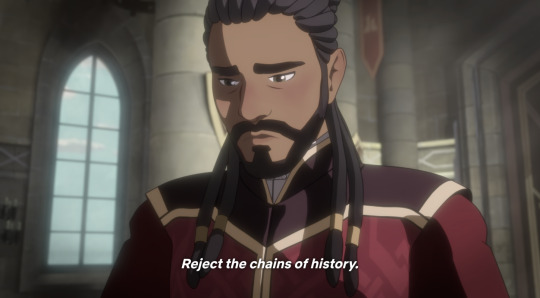

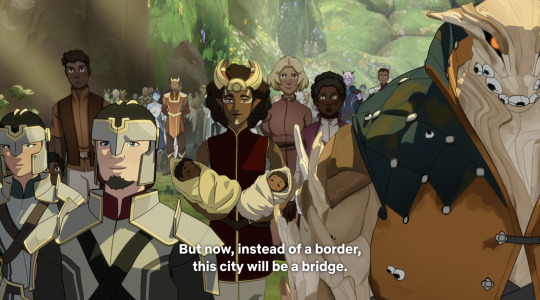
"(Modern) liberalism [as a part of centrism] as an ideology essentially concerns itself with the idea of freedom, where protecting and enhancing individual freedom is the central concern of politics. Modern liberalism believes that the biggest threat to individual freedom is poverty, since it limits the choices people have in life, and prevents them from living to their fullest potential. As such, modern liberals believe that the government should intervene in economic and social issues like poverty or welfare. Modern liberalism still believes in a market economy [...] and is still very much for reform and gradual change in the midst of all of this. So for liberals, revolution is a no-no, and they prefer for things to be peaceful and orderly."
Again, TDP does have an emphasis on freedom, with access to magic standing in as an allegorical 'market of resources' in many ways. The social inequality the show focuses on is humans being born without magic and the alternatives/consequences of it, the harm of Xadia's isolationism, and how Aaravos exploits that inequality through introducing dark magic. However, TDP's only concern is not with freedom or even individuals (re: the Silvergrove's collectivist leanings, 3x09's emphasis on group unity, Sarai's warning of focusing only on removing individuals as a fix to systemic problems or issues).
So while I wouldn't say TDP as a work is focused heavily on revolutionary politics, that's partially because it's not a straightforward oppressor-oppressed narrative (the way Arcane is / seemingly should be) either. Humans were expelled from their homes in Xadia to just one half of the continent (where some humans already lived, and where some elves were likewise forced to leave and abandon important sites, such as the Moon Nexus) but then given entirely free reign. Xadia left them alone, guarding only the border to ensure they wouldn't cross over and kill Xadians for dark magic parts in the post-expulsion 1,000 year interim, as dark magic can make someone powerful enough to kill archdragons and more powerful than elves/humans alike. If anything, the show calls into question the validity of varying degrees of oppression as a justification for killing/attacking civilians, which has more and more made me think about world affairs as of late (i.e. justifications offered by Israel of what is okay in the name of reclaiming a homeland) as a worthy concept more people could fare with getting through their heads, dark magic as a cautionary tale against viewing people and the land as resources only, etc etc.
I am also not, to be clear, saying that there no elements of centrism in TDP, political theory is not my primary background by any means, but that TDP presents an undeniably & primarily centrist narrative feels wonky as a claim to me, even without taking into account such an adamant rehabilitative stance, those responsible for the unfair magic system being the endgame antagonists, and with 3 seasons to go to explore things further. Even by the end of s7, we see humans returning to Xadia with protagonists advocating for the resumption of land and lives sharing (Amaya, a human queen of the Sunfire elves; Evrkynd as an elf-human city; "You can't tell humans to leave, they've built friendships, made families") and most of the pre-series status quo continuing to be upheaved by the core protagonists.
#analysis series#sort of#analysis#god plz don't be weird on this post#tag ramble#i also think it does a good job at presenting a 'both sides' conflict that is 1) genuine and 2) not actually centred on whiteness#whereas most ones falter bc it is about whiteness if only allegorical and. yeah#the video itself was very interesting bc i still haven't watched arcane but i can like#see tdp's shadow with it#hextech = dark magic / viren = silco / vander = harrow#but every time tdp neatly sidesteps like vander argues fighting for change was wrong bc it got violent#tdp allows trio (esp ezran) to engage in violence to protect change#but are warded against pursuing revenge (harrow's actual regret) and losing sight of your desire for change
55 notes
·
View notes
Text
From the Waterstones edition of The Ballad of Songbirds and Snakes
A Q&A WITH SUZANNE COLLINS
Leading up to the publication of The Ballad of Songbirds and Snakes, author Suzanne Collins and the book's editorial director, David Levithan, spoke about some of the philosophical and literary influences on the book, many of which can be found in the series of quotes on the epigraph page at the book's start.
transcribed below
DL: One of the first things you said to me about this book was that I'd better brush up on my Hobbes, Locke, and Rousseau to best understand what you were doing with it. That feels like a great springboard for this conversation, since I know these philosophers and their conflicting constructions of human nature were key to what you wanted to explore. Did the novel start with these questions and then find its story, or vice versa?
SC: This novel began in a philosophical swamp that my brain swam around in until the narrative came to me. With the two series, the Underland Chronicles and the Hunger Games trilogy, my goal was to tell stories for young audiences that examined aspects of just war theory. If you focus on that topic long enough, you naturally arrive at the question of human nature and why we tend toward conflict.
I'll do my best to boil down some complex ideas here, but they all bear far more discussion. The state of nature debate of the Enlightenment thinkers — Hobbes, Locke, and Rousseau — addresses the human condition before we had societies or political associations. Your opinion on who we were in the state of nature defines the form of government you think we need.
During my work on the two series, I kept running into Thomas Hobbes, author of Leviathan, and his war "of every man, against every man." He wrote that in the state of nature, life was "solitary, poore, nasty, brutish, and short" and that we require a common power, a sovereign or absolute political authority, to rule us. In return for protection, we agree to give our obedience.
John Locke had a gentler view of humanity. He wrote that "men living together according to reason… is properly the state of nature. But force… upon the person of another… is the state of war." He's very big on reason, which "teaches all mankind, who will but consult it, that being all equal and independent, no one ought to harm another in his life, health, liberty, or possessions..."
DL: That sounds very familiar….
SC: Yes, much of it was used by Thomas Jefferson in the Declaration of Independence less than a century later. "We hold these truths to be self-evident, that all men are created equal, that they are endowed by their Creator with certain unalienable Rights, that among these are Life, Liberty and the pursuit of Happiness." Locke believed in limited government. The government was there to protect the rights of the people, and if it failed to do so, they could put another in its place.
DL: And Rousseau?
SC: Jean-Jacques Rousseau thought that human beings in the state of nature were motivated by amour de soi, a naturally good form of self-love or self-preservation. When we entered society, amour de soi evolved into amour-propre, a destructive form of self-love that depends on the approval of other people and is associated with vanity, contempt, shame, and envy. Rousseau wrote about the rule of "the general will," or the will of the people as a whole. In The Social Contract, he says, "Each of us puts his person and all his power in common under the supreme direction of the general will; and in our corporate capacity, we receive each member as an indivisible part of the whole." His thinking influenced the French Revolution, socialism, and a wide range of political theory.
DL: And how do you see the Hobbes, Locke, and Rousseau positions on human nature in relation to your characters?
SC: The principal characters in Ballad embrace elements of the different philosophers' arguments and carry them into Panem. Volumnia Gaul passes Hobbes's basic worldview on to Coriolanus. Sejanus fights the good fight for Locke, as does Lucy Gray, who picks up the mantle for Romanticism as well. Rousseau is lightly sprinkled over the Covey, usually by way of his influence on the Romanticists, as he was an early one himself.
DL: Why is the state of nature debate timely?
SC: Here in the United States, we spend a great deal of time attacking one another for our liberal or conservative views, left or right, blue or red. But I think we've lost sight of a deeper issue, which is about democratic versus authoritarian rule, and what it requires to sustain a democracy.
DL: Another influence on the book is Wordsworth, whose "Lucy Gray" influences both your character of that name and one of the ballads she sings. Did you know from the start that the poem would be the basis for her ballad, or was that something that came after the story was set in motion?
SC: Romanticism emerged in the late eighteenth century and celebrates individualism, emotion, nature, free expression, and the form of nationalism embodied by the Covey. Wordsworth was a key figure in the movement with his Lyrical Ballads, where he describes poetry as "the spontaneous overflow of powerful feelings." When I read his "Lucy Gray" poem, I thought, That's it. That's my girl's ballad.
The character was already fairly well-developed, but with a different name. I had to find her name the way I had to find Katniss's. I was drawn to the poem by the mystery of Lucy Gray's fate. Being able to echo that in the novel seemed perfect, leaving the reader to wonder, leaving a question that I can address if I decide to fill out more of the world of Panem. Also, the name Lucy Gray seemed designed for the Covey, with its built-in color. I liked the idea that the Covey, as lovers of nature, would honor all colors, not just the flashy ones: taupe and ivory and gray like a winter day. Then there's the ambiguity of the color gray. I don’t think that was an accident on Wordsworth's part. And the obliteration by snow. And the easy adaptation to a song. It met so many needs.
DL: And what happens when Coriolanus's Hobbesian worldview encounters Romanticism?
SC: They're like oil and water; they don't mix well. Ultimately, Romanticism is a factor in bringing down Coriolanus and the Hunger Games. Katniss does it with the help of Lucy Gray's music. Conversely, the katniss plant lends a hand to Lucy Gray in a time of need.
DL: Jumping from the derivation of Lucy Gray's name to the derivation of Coriolanus's . . . as you note in the acknowledgments, one of the serendipities that occurred during the writing and editing of this book was that it happened to coincide with the first Shakespeare in the Park production of Coriolanus in decades. In the trilogy, particularly when it comes to Snow's finale, the connections to Shakespeare's Coriolanus are clear. What do you see as the points of connection between eighteen-year-old Coriolanus Snow and the leader in Shakespeare’s play?
SC: Shakespeare's Coriolanus owes a great debt to "The Life of Coriolanus" in Plutarch's Lives. Like the protagonist in the play, he had anti-populist views. Here, Plutarch describes Coriolanus's reaction to a dispute over grain distribution in the Senate. (Coriolanus is referred to by the name given to him at birth, Caius Marcius.) "But Marcius rose in his place and vehemently attacked those who favored the multitude, calling them demagogues and betrayers of the aristocracy, and declaring that they were nourishing, to their own harm, the evil seeds of boldness and insolence which had been sown among the rabble; these they should have choked when they first sprang up, and not have strengthened the people by such a powerful magistracy as the tribunate."
Shakespeare makes his Coriolanus's loathing clear from his entrance, when he greets the citizens with: "What's the matter, you dissentious rogues, / That, rubbing the poor itch of your opinion, / Make yourselves scabs?" He follows that up with a whole string of insults, driving home his contempt for them.
This anti-populist position would be the key character trait to carry over to the book. Young Coriolanus's sense of superiority to the district citizens of Panem is absolute. He believes them to be almost subhuman, barbaric, and he goes to great lengths to separate Lucy Gray from them when he begins to fall for her. Exposure to the districts only reinforces his position. And while he recognizes their advantages, he doesn't have a particularly high opinion of his neighbors in the Capitol either. Ultimately, he embraces the Hobbesian worldview that humanity needs an absolute authority to rule at the expense of personal freedom.
DL: And, for better or worse, each Coriolanus has the counsel of a Volumnia. . . .
SC: In the play, Coriolanus is influenced by his mother, Volumnia. In Ballad, Coriolanus's philosophical mother is Volumnia Gaul, not the gentle mother who died when he was five. She educates him and is clearly a fan of Hobbes's state of nature philosophy. Both Coriolanuses come from the upper class, lose their fathers at a young age, serve in the military, and live in the Rome of their worlds. But they're not meant to be identical; in fact, in some ways they're polar opposites. For instance, Coriolanus of the play thrives in war, but Ballad Coriolanus struggles to find its appeal. In this, he's much more like Hobbes, who developed his ideas having lived through the English Civil War.
DL: The one epigraph that surprised me, because we hadn't discussed her influence or her thinking, was the one from Mary Shelley. Although in her most famous novel, she was also investigating the boundaries and inclinations of human nature. How does her influence or her treatment of the themes apply to Ballad?
SC: Mary Shelley embodies the ideas of Romanticism but incorporates Locke's and Rousseau's earlier ones as well, which makes her most representative of Lucy Gray and the Covey. Look at the quote from Frankenstein: "I thought of the promise of virtues which he had displayed on the opening of his existence, and the subsequent blight of all kindly feeling by the loathing and scorn which his protectors had manifested towards him." When I read it, I'm reminded of Locke's tabula rasa, or blank slate, theory, in which all we know comes from experience, as well as of Rousseau's state-of-nature human beings, who were capable of pity and compassion. She seems to be saying that naturally good creatures exposed to an abusive world result in monsters. You can apply that to Frankenstein's monster, Coriolanus, or anyone you choose.
#thg#the hunger games#suzanne collins#tbosas#the ballad of songbirds and snakes#thg resources#lucy gray baird#coriolanus snow#sejanus plinth
74 notes
·
View notes
Text
Hexxus Boons

(Mutagen Connoisseur by Alex Brock)
The second of my boon list done with @thecreaturecodex's delightfully awful Daemonic Harbingers, this one her take on Hexxus! I watched Ferngully as research for this and I have to say? Surprisingly good movie, despite its reputation. I had so much fun blending the songs and lines from this kid's movie into a genuinely evil being.
As with Caracalla, I imagine this is for if Hexxus ever takes his place as one of the four horsemen (RIP Appolyon).
Obedience: Kill an animal or plant, burn its body and inhale the smoke until you begin to cough and choke. Gain a +4 profane bonus on saves against poisons
Evangelist Boons
First Boon Spirit of Destruction- Pyrotechnics 3/day, Defoliate 2/day, or Phantasmal Killer 1/day
Second Boon Toxic Performance- Gain the toxic serenade performance. This functions as a bardic performance with verbal components that uses song, and if you have levels in bard or a class that grants similar performance, you may spend rounds of that performance on your toxic serenade. Non-allied creatures that can hear this performance take 2d6 poison damage at the start of their turn and gain a -4 penalty to saves against poisons and poison effects. Nondaemon creatures immune to poison lose their immunity, but do not take the -4 penalty. A fortitude save with DC equal to 10+½ your character level+your Charisma modifier negates the damage. If you do not have the bardic performance ability or an equivalent, gain the bardic performance ability as a bard with level equal to your character level -4. You do not gain any performances other than toxic serenade.
Third Boon Despoil- As a 10 minute ritual that costs 17,000gp in material components, including the heart of a plant or animal that dwells within the area, you may defile and curse an area of nature. This functions like the spell Greater Curse Terrain, but it is automatically permanent and you cannot dismiss it.
Exalted Boons
First Boon All That’s Foul- Obscuring Mist 3/day, Aggregate Affliction 2/day, or Absorb Toxicity 1/day
Second Boon First Class Smoke- When casting spells that create areas of fog or smoke, such as Obscuring Mist or Fog Cloud, you may cast or prepare them at one level higher to cast them as Polluted Spells. This functions like metamagic. Creatures that are not Neutral Evil must hold their breath or begin suffocating in such clouds. The constitution DC to continue holding their breath after they’ve started running out is equal to the spell DC, rather than 10.
Third Boon Encroach the Wild- When building a construct, you may imbue it with the power of your foul master; that construct’s natural attacks deal an additional 2d6 damage to creatures of the plant, animal, vermin, or fey type, as with the Bane enchantment.
Sentinel Boons
First Boon Pollution’s Crusader- Mount 3/day, Wartrain Mount 2/day, or Phantom Steed 1/day
Second Boon Mechanical Marvels- Gain Animate Objects as a spell-like ability usable 2/day. Objects animated this way grow an assortment of saws and shearing surfaces; their attacks become slashing and are considered evil for the purpose of overcoming damage resistance.
Third Boon Strike the Heart- You can see the magic of creation that resides in the center of every living creature, and know how to seek and destroy it. 3/day as a standard attack action, you can attempt to drive your weapon into the heart of a living creature. Make an attack with any weapon, ignoring the target’s natural armor; on a hit, the creature is stricken. In addition to the damage dealt, it takes a -3 penalty to all attack rolls, damage rolls, and skill checks, as well as to concentration and caster level checks. This effect can only be cured by Restoration or more powerful healing effects.
30 notes
·
View notes
Note
What do you think each boy would like to study afterwards if rejet ever allowed them to graduate high school?
I like this <3
=================================================================================================
Sakamaki's
Shu Sakamaki:

Music Theory / Ethnomusicology
The only thing he’s truly passionate about is music. If he’s forced to participate in the mortal world, he’d pursue the historical and cultural side of sound—especially melancholic classical music. Shu would specialize in forgotten composers, funeral hymns, and lullabies from ancient civilizations. Don’t be shocked if his dissertation is on the “psychological effects of lullabies on grief-stricken monarchs.” And yes, his thesis recital would make people cry blood.
Reiji Sakamaki:

Political Science / Law / Philosophy (Triple Major, Obviously)
Reiji is the poster boy for the debate team and would thrive in an environment where he can absolutely destroy people in writing and speech. He'd also be that guy who writes formal ethics critiques of his professors and turns his assignments in bound in leather. He’d likely pursue academia or court manipulation—vampire or human. If vampirism ever goes public, Reiji will be the first to push for vampire supremacy legislation.
Laito Sakamaki:

Psychology / Literature / Fashion Design
He’d study psychology because he already messes with people’s minds, so why not get paid for it? Bonus: He’d ace every class without studying. He’d also dabble in literature (especially dark romance and horror) and probably fashion, because the man knows how to dress.
Kanato Sakamaki:

Mortuary Science / Fine Arts / Religious Studies
Kanato would be obsessed with death—not the violent kind, but the ritualistic, Victorian kind. Think embalming, mourning jewelry, grave culture. He’d be that creepy but talented art student who paints portraits using ash or blood. He’d also take Religious Studies to rip apart human doctrines and find contradictions. His final art project would be a life-sized wax cathedral of his family—no one would survive the critique.
Ayato Sakamaki:
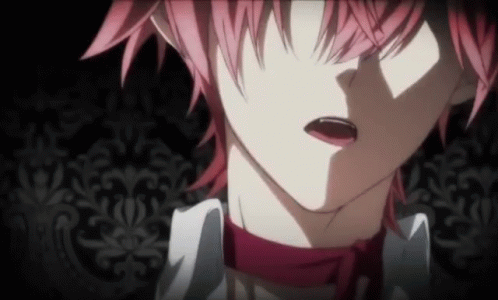
Sports Science / Kinesiology / Culinary Arts (Secretly)
Outwardly, he’s all about proving his strength. He’d major in something sports-adjacent to keep his “Ore-sama�� title relevant. But here’s the secret: Ayato likes food. If someone encouraged it, he'd double in culinary arts, probably excelling in bizarre blood-based recipes he’ll never admit are actually brilliant.
Subaru Sakamaki:

Architecture / Engineering / Environmental Science
Subaru wants to build and break things in equal measure. His talent for destruction could be channeled into construction and design, especially if he could work in remote, peaceful environments. He’d build quiet homes, gothic chapels, or ruins that serve as personal sanctuaries. Subaru would also do well in environmental science, wanting to learn how to stop messing up the world—even if he thinks he’s a monster himself. Would it be wrong if I said he would build and detail cars....
Mukami's
Ruki Mukami:

Ruki – Library Sciences / Literature / Sociology
Ruki is naturally academic and socially aware. He’d probably pursue something like library sciences to surround himself with knowledge or sociology to better understand human systems. His thesis would compare how vampire clans mirror human class struggle. He’d probably write vampire Marxist essays in his spare time and start a quiet revolution in a reading room.
Kou Mukami:

Marketing / Performing Arts / Media Studies
Kou would lean into what he already excels at: celebrity branding and manipulation. He’d study marketing, PR, or media psychology and ace everything about public image, parasocial relationships, and emotional contagion. He’d also dominate any performing arts program, even if he rarely attended class. His final project would be a viral campaign with a hidden vampire message. And it would work.
Yuma Mukami:

Agriculture / Botany / Culinary Science
Yuma would absolutely major in agriculture, environmental sustainability, or urban farming. He’d be top of his class without trying, running the greenhouse like a king and teaching the professors. He might also sneak in a minor in culinary science, because what good is farming if you can’t cook the harvest? He’d use food as peace, protection, and protest.
Azusa Mukami:

Therapy / Social Work / Art Therapy
Azusa… baby angel. He’d major in social work, with a focus on trauma recovery. He might also study art therapy or nonverbal communication. He’d create a peaceful space where people learn to speak through creation, not pain. He’d use his past to help others heal, not despite it.
Tsukinami's
Carla Tsukinami:
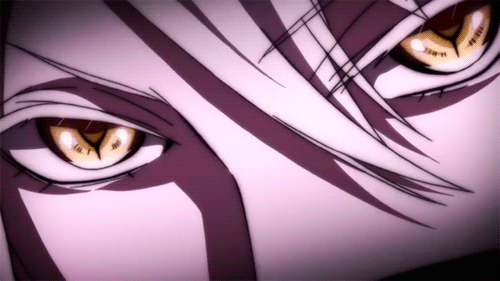
Ancient History / Genetics / Theoretical Physics
Carla, as a Founding Ancestor, would go for pure intellectual domination. He’d study ancient civilizations, bloodline inheritance, and cosmological decay. He’d speak in full academic riddles. Professors would both fear and admire him. He’d correct textbooks mid-lecture. Oh—and he’d ace vampire biology because he wrote the rules.
Shin Tsukinami:

Criminology / Mythology / Physical Education
Shin would major in criminology—he wants to understand chaos, not just cause it. He’d also do well in mythology and comparative religions, especially ancient wolf gods and primal deities. His athletic side would push him into P.E. or martial arts programs, where he dominates every match and becomes legend.
38 notes
·
View notes
Text
Wind Breaker Chapter 153: Heat
Spoilers ahead! Also um idk if this gonna be a long one, but this chapter do be wildin'
So, Takiishi's mindscape is...interesting to say the least.

It's completely trashed and kinda looks like a horder's house. Interesting to note is that there's dead trees here, perhaps it wasn't always that way beforehand but a wild fire broke out and made it a wasteland (literally).
The sudden combustion and scorched corpses is such a visual. What a horrifying(ly beautiful) scene honestly. Nii-sensei did such an amazing job, it looked like a horror manga!
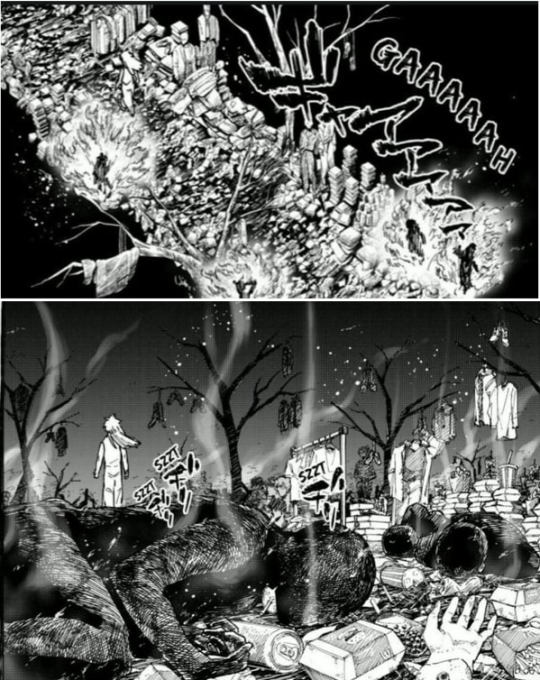
Those people in Takiishi's mindscape, I'm assuming they previously fought him but were scorched by Takiishi's flames as he defeated them. None of them, standing even a chance to knock him down a peg.
Speaking of, I don't know if this has any correlation to Takiishi's mindscape but a lot of these visuals remind me of Avīci, aka the worst and most painful of the Eight Hot Narakas. In *Genshin's Buddhist text the Ōjōyōshū (往生要集, lit. The Essentials of Rebirth in the Pure Land), one of the regions he described within this level is the Region of the Bird. It said that within this region, a gigantic bird with a fire-breathing beak would swoop in and grab a sinner only to drop them onto the firey ground, shattering them. Remaining unamed, the descriptions of this bird shares similarities to the Karura (which I had mentioned on a previous post about Takiishi). So um take that info as you will.
*A Japanese Buddhist monk from the Heian period.

The way Takiishi looks at Umemiya is fascinating as well. Umemiya surrounded by flames, either his own or Takiishi's (I'm inclined to believe it's Takiishi's), and yet remain relatively unscathed despite looking charred. As if both of their flames are equally fighting for the chance to consume the other. It's like watching a trainreck in the making wherein you know the aftermath is gonna be brutal but you just can't look away from it.


Or perhaps it's like watching a forest fire. In nature, forest fires are destructive but they can also be a source of rebirth. When the dust is settled, sunlight can penetrate the soil that was once blocked by the leaves and the branches, the ashes from the forest remains becoming fertilizers to breathe life to a new forest and an entirely new ecosystem. A chance of renewal if you will, but will that the be the fate of Takiishi and Endo? We'll see.
I very much enjoy the fire symbolism Nii-sensei is using for both Takiishi and Umemiya because fire can be both destructive and constructive. History has taught us that civilization was built with the aid of fire and it was also used to destory it. So I'm enjoying double entendre of it all.
Honorable mentions:
Sakura "He feels so distant" Haruka. I just want to wrap my sweet child in a blanket, he's so worried guys 😭🤧. I need his face to be happy and smiling again pls.

Endo, a pot calling kettle black much?

–
Thank you Nii-sensei for another great chapter and Jacqueline Fung as well for the official translation! Please go and support them via the official international release in Kodansha.
#wbk chatter#devotee of knowledge#umemiya hajime#takiishi chika#sakura haruka#endo yamato#wind breaker#wind breaker spoilers#wind breaker chapter 153
56 notes
·
View notes
Text
Day 13 | Day 15

31 days of FF 7 Headcanons: Day 14 - Secret Ambition
For Bianca Moore, ambition isn’t a ladder. It’s a uncontrolled pyre. On the surface, she may appear loyal to Sephiroth’s vision of cosmic destruction, and she is. But beneath her devotion lies a truth far more unsettling. She doesn’t follow him because she needs him. No. She follows him because he mirrors her.
Bianca’s hidden ambition is not to rule, be adored, or even be avenged. It is to become something eternal, something unspeakable and divine, forged in the ashes of everything that tried to define or destroy her. In this post, we’ll explore how this quiet yet all-consuming hunger affects her every action, every bond, and how it threatens to unravel everything in the pursuit of becoming something greater than Sephiroth currently is and the gods, themselves.

Possible Trigger Warnings: Abuse, apocalyptic themes, body horror, betrayal, blood, cult trauma, death, divine punishment, emotional manipulation, existential dread, graphic violence, grief, loss of identity, manipulation, parental abuse, psychological trauma, religious trauma, self-actualization through destruction, skinning, supernatural violence, trauma bonding, vivisection.
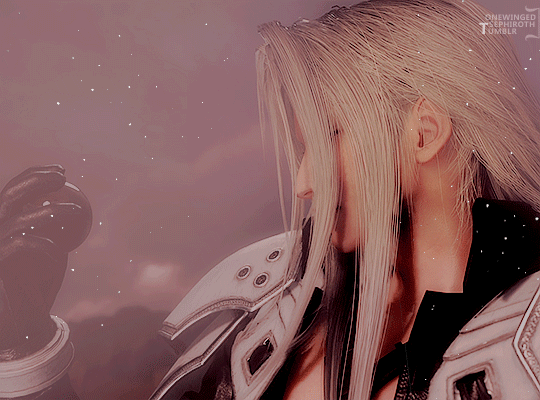
Bianca Moore’s secret ambition isn’t conquest, nor is it salvation—it is transcendence. Beneath the chaos she embraces and the kilonova she dreams of birthing lies an unspoken, aching desire to surpass the limitations imposed upon her by birth, bloodline, prophecy, and pain. She no longer dreams of peace or belonging. Those are illusions the world beat out of her. Instead, what drives her is the yearning to become something untouchable. She wants to be beyond divine, beyond monstrous, beyond Jenova, and, unfortunately, despite all of her love for him, beyond what Sephiroth currently is. She doesn’t just want to break the cycle. She wants to become the force that renders cycles obsolete.
This ambition is what fuels her unwavering loyalty to Sephiroth. Not as a subordinate, but as an equal half of a cosmic whole. They are two parts of a prophecy that was never meant to be fulfilled, and the gods’ attempts to split them only ensured their reunification. Bianca clings to him not as a lifeline, but as a mirror of what she could become.
She sees in him the possibility of not just reshaping worlds, but ascending above them. Her ambition is to rise with him into something transcendent, immortal, and incomprehensible: beings beyond morality, fate, and form. In that final, post-apocalyptic gasp, she sees divinity not as purity, but as freedom.
This hidden drive bleeds into every decision she makes, even if she never names it. She manipulates, destroys, and builds only to tear down again. She does not do this out of malice but because she is always reaching for something higher. Others mistake her destruction for vengeance, as she has taken on the mantle of an 'Angel of Vengeance', but that doesn't truly drive her.
They don’t see the fire in her eyes that says: this Existence was never worthy of what I was meant to be. Her cold resolve in battle, her refusal to forgive Shinra or the Creator, her calculated cruelty toward those who wronged her. These are not just scars of trauma. They are steps toward an unspoken climax: the final act of her divine play, if you will.
However, this ambition isolates her. Few can understand a hunger so existential, so vast it devours the self. Even with Sephiroth, there are moments when she wonders if he sees the full scope of her vision. She fears that if he were ever to fall short or his strong will were to fail she might be left alone to carry the burden of their shared destiny.
And yet, she would do it. Because she believes she was meant to now. Her interactions are shaped by this quiet superiority, this knowledge that she has outgrown the constructs of guilt and her divine grace. It makes her seem cruel, even heartless. But it’s not detachment. To Bianca, it’s clarity.
In the end, Bianca’s secret ambition is her final defiance. Where others sought to chain her to fate, identity, or duty, she chooses to become something wholly new: the embodiment of the end and the seed of what comes after. Not the angel. Not the demon. Not even the hybrid with alien cells supercharging her demonic essence. No. She is aiming for more. Something untitled. Something unshaped. Something infinite.
If she must burn everything to get there, so be it. Because for Bianca Moore, destruction isn’t the end goal. It’s the crucible through which true divinity -- a divinity that even the Creator hasn't touched -- is born.

@themaradwrites @shepardstales @megandaisy9 @watermeezer
@prehistoric-creatures @creativechaosqueen @chickensarentcheap
@inkandimpressions @arrthurpendragon
#31 days of headcanons#31 doh: ff#fwc: ff#ff vii oc#characters: fwc#characters: fwc: ff#au: canon divergent#bardic tales#bardic-tales#31 doh: day 14#headcanon: fwc: ff#headcanon: relationships#headcanon: backstory#character: sephiroth#sephiroth#ship: sephica#otp: bianca / sephiroth#sephiroth x oc#oc x canon#headcanon: goals / motivations#31: doh: bianca moore#oc: bianca moore
15 notes
·
View notes
Text
9.000 palestinians were killed in 3 weeks of bombings and the USA has just approved $14bi in additional military aid for Israel, on top of the annual $3.8bi Joe Biden instituted 28 years ago. Israel has targeted an ambulance convoy near Al-Shifa hospital, which was evacuating wounded from hospitals to the Rafah crossing. Al-Shifa is already working at 164% capacity, while 25 of the 35 hospitals in the Gaza Strip have shut down due to damage from bombing and lack of fuel (if I hear another zionist talk about how good Israel is for roof knocking hospitals is I'm going to explode). They did everything Israel asked of them and still they were murdered.
Almost half of these deaths are children, and even in death they're not respected and the US president and western media outlets are casting doubt over the reported numbers, even though they cast no such doubt over the numbers reported by Israel even though there's no official list provided by the government. It's ridiculous how blatantly they are copying Holocaust denialism talking points.
Meanwhile, Israel is enjoying the fog of war to proceed with the ethnic cleasing of the West Bank. Palestinians in Masafer Yatta, that have been intimidated by the construction of settlements hounding them for years, received threats by armed civilians saying they would be killed if they didn't leave in 24h and since then settlers have burned down their homes. Bedouin villages in Hebron, whose population was already routinely brutalized by settlers from the outposts nearby, are receiving equal threats and being terrorized by the destruction of their water supplies, roadblocks and physical violence. This is the largest forced displacement in the West Bank since 1972 and it's all being committed by settlers backed by the IDF. Israeli activists said they don't even know if these settlers are acting at the government's request or if they're just terrorizing people into running away from their homes in their free time. Thousands of Gazans who worked within Israel's "green line" were being held hostage since Oct 7th and reported they were tortured and labeled with numbers around their legs. Today, they were pushed back into southern Gaza amid airstrikes.
Palestinian journalists are being targeted for live streaming their genocide. The least we can do is pay attention and take action. Gazans have said our support lifts their spirits. If nothing else, to lift their spirits.
TOMORROW, NOV 4TH, there will be a National March in Washington DC organized by 500+ orgs and expected to be the largest pro-Palestine movement in the history of the USA. If you can, please attend.
Educate yourself. Read into Palestinian history and the occupation. You can't common sense people out of decades of propaganda. If your arguments crumble when a zionist brings up the "disengagement of Gaza", you have to learn more.
Read Decolonize Palestine. They have 15 minute reads that concisely explain the occupation (and its colonial roots) and debunk popular myths, including pinkwashing.
Read on Palestine. Here's an amazing masterpost.
Verso Book Club is giving out free books on Palestine (I personally downloaded Ten Myths about Israel by Ilan Pappe).
Keep yourself updated and share Palestinian voices, looking to inform yourself from the sources. Palestinians have asked of us only that we share, tweet and post, over and over. Muna El-Kurd said every tweet is like a treasure to them, because their voices are repressed on social media and even on this very app. Make it your action item to share something about the Palestinian plight everyday. Here are some resources:
Al Jazeera
Anadolu Agency
Mondoweiss
Boycott Divest Sanction Movement
Palestinian Youth Movement
Mohammed El-Kurd (twitter / instagram)
Al-Shabaka (twitter / instagram)
Mariam Barghouti (twitter / instagram)
Muhammad Shehada (twitter)
Motaz Azaiza (instagram) - reporting directly from Gaza.
Take action. You can participate in boycotts wherever you are in the world, through BDS guidelines. Don't be overwhelmed by gigantic boycott lists. BDS explicitly targets only a few brands which have bigger impact. You can stop consuming from as many brands as you want, though, and by all means feel free to give a 1 star review to McDonalds, Papa John, Pizza Hut, Burger King and Starbucks. Right now, they are focusing on boycotting the following:
Carrefour
HP
Puma
Sabra
Sodastream
Ahava cosmetics
Israeli fruits and vegetables
Push for a cultural boycott - pressure your favorite artist to speak out on Palestine and cancel any upcoming performances on occupied territory (Lorde cancelled her gig in Israel because of this. It works.)
If you can, participate in direct action or donate.
Palestine Action works to shut down Israeli weapons factories in the UK and USA, and have successfully shut down one of their firms in London.Some of the activists are going on trial and are calling for mobilizing on court.
Palestinian Youth Movement is organizing direct actions to stop the shipping of wars to Israel. Follow them.
Call your representatives. The Labour Party in the UK had an emergency meeting after several councilors threatened to resign if they didn't condemn Israeli war crimes. Calling to show your complaints works, even more if you live in a country that funds genocide.
FOR PEOPLE IN THE USA: USCPR has developed this toolkit for calls, here's a document that autosends emails to your representatives and here's a toolkit by Ceasefire in Gaza NOW!
FOR PEOPLE IN EUROPE: Here's a toolkit by Voices in Europe for Peace targeting the European Parliament
FOR PEOPLE IN THE UK: Friends of Al-Aqsa UK and Palestine Solidarity UK have made toolkits for calls and emails
FOR PEOPLE IN GERMANY: Here's a toolkit to contact your representatives by Voices in Europe for Peace
FOR PEOPLE IN IRELAND: Here's a toolkit by Voices in Europe for Peace
FOR PEOPLE IN POLAND: Here's a toolkit by Voices in Europe for Peace
FOR PEOPLE IN DENMARK: Here's a toolkit by Voices in Europe for Peace
FOR PEOPLE IN SWEDEN: Here's a toolkit by Voices in Europe for Peace
FOR PEOPLE IN FRANCE: Here's a toolkit by Voices in Europe for Peace
FOR PEOPLE IN THE NETHERLANDS: Here's a toolkit by Voices in Europe for Peace
FOR PEOPLE IN GREECE: Here's a toolkit by Voices in Europe for Peace
FOR PEOPLE IN NORWAY: Here's a toolkit by Voices in Europe for Peace
FOR PEOPLE IN ITALY: Here's a toolkit by Voices in Europe for Peace
FOR PEOPLE IN PORTUGAL: Here's a toolkit by Voices in Europe for Peace
FOR PEOPLE IN SPAIN: Here's a toolkit by Voices in Europe for Peace
FOR PEOPLE IN FINLAND: Here's a toolkit by Voices in Europe for Peace
FOR PEOPLE IN AUSTRIA: Here's a toolkit by Voices in Europe for Peace
FOR PEOPLE IN BELGIUM: Here's a toolkit by Voices in Europe for Peace
FOR PEOPLE IN ROMANIA: Here's a toolkit by Voices in Europe for Peace
FOR PEOPLE IN UKRAINE: Here's a toolkit by Voices in Europe for Peace
FOR PEOPLE IN AUSTRALIA: Here's a toolkit by Stand With Palestine
FOR PEOPLE IN CANADA: Here's a toolkit by Indepent Jewish Voices for Canada
Join a protest. Here's a constantly updating list of protests:
Global calendar
Another global calendar (go to the instragram of the organizers to confirm your protest)
USA calendar
Australia calendar
Feel free to add more resources.
157 notes
·
View notes
Note
"Were my optics pure gold, would you accept them?
What would you take from me, that I could prove myself a changed mech?"
The whole poem, I have it saved bc it haunts me (and also bc I'm turning it into a comic strip but shhhhh I am very slow abt it)
oooh!! I'm so glad you enjoy that poem! and oooooohhhhhhhh a shh comic strip shh shh 👀 👀
if you'd like to know more about how I constructed the poem, I put it beneath the cut :D
I thought really hard about how Megatron would consider himself, regarding the destruction that he's brought to countless beings, and how that contrasts to the worth of his own life. So he starts by asking about that:
“By what metric would you judge me? What action deigns itself equal to the value of a life?
He's looking to make amends, as it were, and his approach to that process is to ask, "what would you take from me to make this equal/better now?" The optics line is part of that - he offers his eyes and the thing that makes him a transformer - the most precious things he can offer [side note, having him offer a physical part of his body that humans do not have an equivalent to helps the world feel more real and transformers-y]:
Were my optics pure gold, would you accept them? Were my T-cog indestructible, would you have it? What would you take from me, that I could prove myself a changed mech?”
He deliberately pauses the poem recitation to change his physical position. this emphasizes a change in thought process- he wants to offer another approach to this trade off:
Here Megatron's stance shifted from a defensive posture to open arms.
Now he suggests that he should give something physical of himself freely instead of having it taken from him by another [note, more non-human anatomy]:
“Or perhaps I should give. Shall I give you the fine circuitry under my fingertips? The soft lining of my spark chamber?
But taking or giving physical parts of his body won't really accomplish anything. It can't bring anyone back, and it will only leave him damaged. So at the end he offers something immaterial, but perhaps worth more than anything in his physical body:
Or may I give you something else entirely? May I give you my word, my actions, my solemn promise that I seek to be better than I once was?”
This is Megatron still struggling to accept his part in what's happened. It's not stated outright much in the fic - because this isn't really a fic about Megatron - but we do see hints of this: he has to deal with his namesakes' destruction over and over and over and over. Every single dimension they go to, he sees what another Megatron has done. He's taking the punishment for all of them, in a way, by living with all that knowledge and guilt.
So yeah. He's still struggling with the whole idea of it, and he's still trying to prove to everyone that he has changed. I'm so happy you enjoy the poem! It seems to have accomplished what it set out to do <3
Thanks for the kind ask!
25 notes
·
View notes
Note
Sorry but... but why andrey and block???? i reeeaaally like ur work but and they somehow work together but why them??? /nbr
ohhh this question.... I don't want to be that person who writes an essay in response to a question but who cares what I want right? going to brutaly use your question to talk about them (sorry for the repeats and mistakes, eng is still not my first language)
In short: because I want to. In long: actually blockdrey is a thing that was born year++ ago from a silly idea (they do have a couple of interactions, so it was fun) I told my girlfriend and she really wanted to support me at the time because of my job-killed state. a lot has happened since then but we still love them very much.
It's an explosive combination that's either fire or, suddenly, harmonious resonance. Interesting perspective. First of all, they are two independent and NOT codependent adults. andrey and block are as equal as possible, even if they disagree on some points. block is stronger and tougher physically, andrey is more agile and strong-willed.

andrey demands a "deterrent" for himself. he brings harm to everyone with his own personality, and the people around are not the kind of people who can stand it. andrey is too strong, freedom-loving, too impetuous, and destructive. block is a deterrent by profession. a major-general undertakes to be the commander-in-chief of his unit's actions. and he is so in character: restrained, logical, rough…. and he's clearly going through things that the average man can't. he's got a strong inner core.
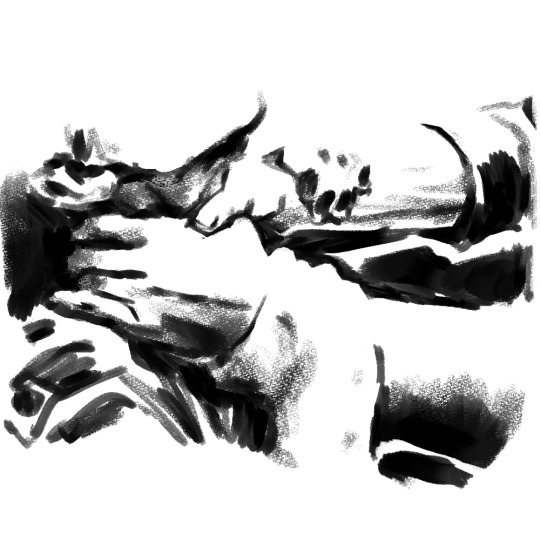
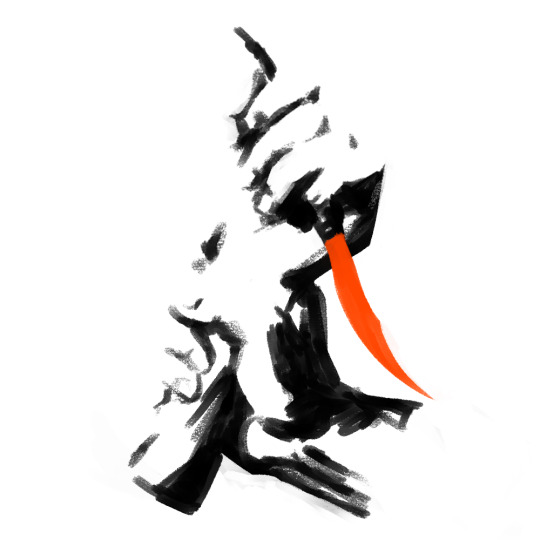
They'd be looking for equal partners. there was no situation that andrey was interested in people weaker in any way (primarily in spirit) and, as it seems, all those who interested him have great willpower. yes, eva yan too. and block has proven himself over a hard and rough life. a man capable of answering both a blow and a word. what he needs from another person is freedom
block comforts himself with hopes for a miracle. i love the way he warmly treats the polyhedron without disliking either side. he is caught between the hammer and the anvil of events. If you remember the conversation between stamatins and dankovsky, then you know they are not so different in their positions. polyhedron needs the city, without it it's confined in formalin. block with all honesty can close the gap in andrey's "inferiority complex" so to speak, which by the end of the story goes completely over the edge. he doesn't feel real without maria and peter, doesn't feel whole. "he's done everything that was asked of him". block is a pragmatist. he knows who invented the polyhedron and whose hands made the miracle stand. and this understanding is important to andrey as a person. and he really needs that faith (especially in this situation with Powers). The matter of miracles is their personal way of finding common ground, even in the fire.
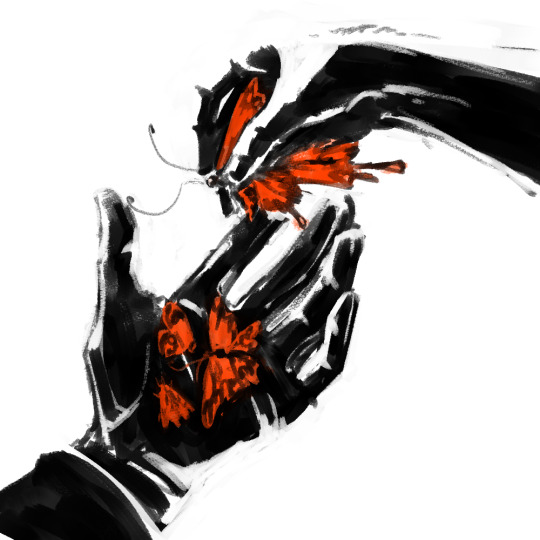
block can be admired for andrey's courage and determination in achieving goals. he himself gives in return stability and reliability, the necessary restraint, deterrent, a stick in the wheel. and yet he does not suffer from it. this helps andrey to focus his energy on achieving constructive goals. in independent self-realization. overcoming the stagnant crisis!
for both of them life is a never-ending struggle for a place under the sun. block is used to making rules, andrey is used to breaking them. block wants to control his environment, andrey hates control. a fight in this situation is more like what they both need in the context of repressed anger in one and open aggression in the other, which no one can resist. andrey finds an equal opponent, block finds an opportunity not to be judged for this breakdown, as andrey will only support this. a fight that is a need for both is not always about destruction.
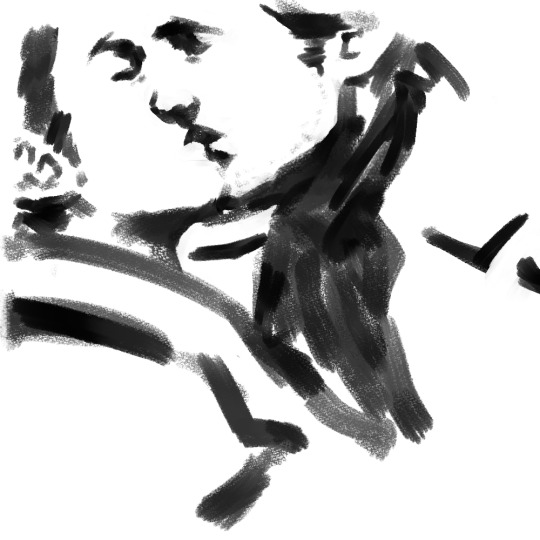
I like this combination because they are equal and… They can talk about what they both want... they can discuss their positions! opinions!!! each other!!!! im chose to be happy with fireworks and presentation. and being chill. their maneuvering on the edge, where there's fire on both sides, I like it. it's interesting and gives me more space. I need a normal (as possible) "plate breaking", where everyone will understand the position in the end and won't go crazy. where the quick burnout of one and the neurosis burning life of the other will give them an opportunity to look at it differently. i mean... relationships are always about passing on and gaining new experiences, it's mutual help, trust. you are two self-sufficient people, able to speak with words through your mouth and without using each other (even if they CAN but they don't and thats the thing). and not denying a different outcome in their case at all lolol but im interested in other things i just like to analize life and everything and show it through stuff. that's why it's them. that's just how the stars aligned yk
#pathologic#мор утопия#andrey stamatin#alexander block#how it ended up being so damn long...#your (it seems) daily spanish inquisition in the mailbox is here again! take heart#pochta time
71 notes
·
View notes
Text
French archaeologists have finished their strike, but the problems persist!
The French Government has decided to change the law relating to research in preventive archaeology, which will allow for the destruction of archaeological sites before studying them. "Preventive archaeology" means the archaeological excavation and research of sites in danger of being destroyed or affected, usually when something is going to be built there. Preventive archaeology makes sure that a site has been excavated and documented properly before the construction work begins, so that we don't lose any information. After it has been excavated and documented, the owners of the plot of land may decide to partially or totally destroy the site and continue with their construction, but at least the knowledge of what once was there has been saved and can be consulted by researchers and the future generations.
Getting rid of preventive archaeology would mean destroying the archaeological sites without studying them, just to build faster. This would mean destroying the evidence of Humanity's past, a limited evidence that we will never recover, we will never know what was there. Imagine that Humanity's history is a book, destroying a site without properly excavating and documenting it would be equal to burning a page of the Humanity history book. That information would be lost forever.
On 15th April 2025, the Fédération des Métiers de l'Archéologie Préventive (FÉMAP) has released the following statement:
FEMAP Press Release: A breach in the regulations on preventive archaeology? How a bill could harm the protection of our heritage
Following on from the Malta Convention for the Protection of the Archaeological Heritage, France adopted a law on preventive archaeology in 2001, which ensures the detection, conservation, or safeguarding, through scientific study, of archaeological heritage elements affected or likely to be affected by public or private development projects.
Since then, all stakeholders involved, including government departments, Ministries of Culture and Research, local authorities, developers, and public and private preventive archaeology operators, have worked together to study, preserve, and promote archaeological heritage.
Over the past twenty years, preventive archaeology has led to major discoveries and scientific advances thanks to this initiative, funded by public and private developers. Preventive archaeology has proven itself to be a key element of regional planning. Its implementation is seamlessly integrated into development projects, from the most modest to the most ambitious.
However, under Article 15bis C, paragraph 18 of the bill to simplify economic life, currently under review by the National Assembly, projects deemed to be of major national interest would no longer be subject to preventive archaeology requirements. This would irrevocably lead to the disappearance of crucial information about our past and would amount to disassociating France from the Malta Convention.
At a time when it is more necessary than ever to write a shared history, France should be proud of its preventive archaeology program and promote it throughout Europe. This is an original and scientifically ambitious program capable of supporting all European development projects.
#archaeology#archeologie#archeology#france#history#french history#european history#heritage#cultural heritage#heritage site#europe#humanities#science#💬
10 notes
·
View notes
Text
#33 - 'All Delighted People' (early version) (non-album track, 2000)

Much like ‘love yourself’, the phrase ‘all delighted people’ was evergreen for Sufjan. We do not have the scores of demos to examine that are available for Sufjan’s most famous self-care anthem, but we do know that he first attached music to that phrase all the way back in the late nineties. That was to be all for a while – but some ideas simply refuse to die. At some point in the late 2000s, Sufjan decided to revisit those three words and construct around them a colossal, dizzying, earth-shattering monument to the apocalypse that announced to the world a dramatic change in style. But for a time, their significance was much smaller, and sweeter; their existence was only known to a handful of the most dedicated of Sufjan acolytes. And around them sat a veritable wrecking ball of synthesisers.
This right here is a proper deep cut. The release of the 2010 extended play All Delighted People condemned the 2000 song ‘All Delighted People’, released on the Eye of the Beholder various artists compilation, to the dustiest regions of Sufjan’s back catalogue. The fact that the dramatically updated and rewritten EP version of the song had its roots in a much smaller, hugely divergent embryo was not mentioned at all in Asthmatic Kitty’s press release for the song and went routinely unnoticed in contemporary reviews. 2000’s ‘All Delighted People’ was superseded and thus eventually forgotten. It was somewhat well-known among Sufjan obsessives during the 2000s, but was nearly entirely written out of history thereafter.
It is, in a sense, understandable. The final release of ‘All Delighted People’ is bigger, bolder, brasher, broader, more confident, more specific and more intentional. It is also only barely similar to its forefather. There is the lyric ‘All delighted people raise their hands’, which carries over unchanged, and there is the melody attached to that lyric, which is very similar in cadence and pitch to the final version and was clearly tweaked slightly for a new arrangement. Otherwise, though, there is not much else. It really is difficult to compare the sprawling, seemingly everlasting verses of 2010’s ‘All Delighted People’ to a song with a total of eight unique lines, one of which consists only of the words ‘all delighted’. For the most part, we must approach the first ‘All Delighted People’ as a work entirely unto itself.
The specifics are dramatically altered, but I would be remiss not to acknowledge that some of the broad thematic strokes stay the same. Most importantly, both songs stay committed to maximalist arrangements. One deduces that Sufjan saw a sort of spiritual and existential gravity in the line ‘All delighted people raise their hands’, and was resolute that whatever music eventually fell into place around it needed to be as dense as a neutron star. The final version would see Sufjan achieving that density with massive washes of orchestration; here he opts for synthesiser upon synthesiser upon synthesiser.
2000’s ‘All Delighted People’ likely originated from Sufjan’s experiments with the Roland VS880 EX digital workstation during his earliest days in New York City, which produced equally synthetic songs like the 1999 ‘Love Yourself’ and ‘Joy! Joy! Joy!’. The approach here is not much different to those productions – we have squawking, abrasive keyboard melodies, malformed drum samples, and tiny explosions of energy at odd points in the song (the piercing break before the final refrain, which ends not fifteen seconds later.) Sufjan seemed to view the synthesiser as a tool of cyclonic destruction at this point in his career; destruction certainly abounds on ‘All Delighted People’, often to the detriment of its listenability. It even has a cute little glitched-out coda that exists for no reason beyond itself. He could, and he did, without much thought to whether he should – and that, to be clear, is perfectly valid for a young, tenacious musical inventor. It just doesn’t make for palatable relistens, especially compared to better-executed excursions like ‘Joy! Joy! Joy!’ or ‘The First Full Moon’ (or, hell, most of Enjoy Your Rabbit.)
Harmonically, melodrama abounds. We are presented with a simple four-chord loop over which floats one of the most sullen melodies that Sufjan has ever produced. There is not much light or hope in the songwriting here – it has a nearly operatic sadness to it, and it’s a sadness that shirks all ambiguity. Some of Sufjan’s best melodies have a paradoxical blend of simple harmony and a deceptively rich emotional profile, but on 2000’s ‘All Delighted People’ there is only forlornness to reckon with. You do not even have to pay attention to the lyrics to understand the atmosphere that Sufjan is establishing here. The effect is only compounded by a quivering vocal delivery that sounds as if it could be blown away by a strong gust of wind. In sharp contrast to the chaotic instrumental, here lies a tender, emotive, unapologetically downcast song.
I say you need not pay attention to the lyrics, but even if you did, you would register much the same emotions. The first six lines of 2000’s ‘All Delighted People’ speak of a society totally overcome by isolation and a pervasive, all-encompassing shame. Interestingly, the song begins on a variation of the title phrase: ‘All the lonely people put their hands / In the personal crocheted Afghan’ (‘Afghan’ in this instance referring to an Afghan blanket, made with a heavily textured crochet pattern.) Clunkiness of the phrase ‘personal crocheted Afghan’ aside, we have a solid evocation here of the behaviours that isolation forces us into. The more alone one feels, the more steps one takes to make that isolation imperishable – thus the covering of the body in this song, the locating of ‘a place / Where their hair cannot reveal their face’, under the assumption that to hide away is better than to hope, or to hurt. An ancient, but accurate, trope.
The song’s second verse – all two lines of it – focuses in on a single unnamed figure amidst the other ‘lonely people’: someone who ‘has happened to have pains’ (a line that, like much other early Sufjan writing, seems to overextend itself just to reach a syllabic quota), and who ‘will know enough to ache’. It is not unreasonable to interpret this song as an explicit psalm for Jesus after hearing these lines. The song’s themes fit such a reading precisely: God assuming the form of one of the ‘lonely people’ on Earth to bring about their collective salvation, a man who bears the weight of humanity’s trials, misdeeds and pains and will eventually die a righteous, but lonely, death. One might imagine the ‘delighted people [who] raise their hands’ at the end of the song to be the same lonely people at its start – this Messiah, this son of God, has cleansed them of their suffering. Free of sin, they now raise their hands in prayer.
‘All Delighted People’ beginning life as an overtly Christian song would not at all be unexpected, considering how dominated Sufjan’s early music was by his faith. It’s not as if the 2010 version was unabashedly secular, either. But the religion of the final ‘All Delighted People’ is complex, non-specific and surprisingly interpersonal; the religion of the first ‘All Delighted People’, if this interpretation does indeed hold water, is a simple invocation of Christ-the-Messiah. It is nothing that we have not seen from this songwriter before. The novelty of the 2000 ‘All Delighted People’ comes in its depiction of a world without Jesus. The presence of the Lord, but in silhouette; the misery we encounter in his absence.
God is never directly mentioned in the early ‘All Delighted People’, though. We are free to take it at face value if we wish: a sad song about the tribulations of loneliness. Maximalist though the arrangement is, it certainly sounds sad – you cannot escape the dourness of that melody, or those chords. Perhaps the electronic chaos is a little too suffocating for a melody this one-dimensional. But even though there may be no serious argument for calling 2000’s ‘All Delighted People’ a more impressive achievement than its successor, it is a vital baby step towards one of his career’s most lauded monoliths and a perfectly enjoyable listen on a miserable stormy day. Consider it another valid entry in the canon of Sufjan electronica.
Besides, the experience of making this must have been invaluable. That aforementioned electronica canon? With Sufjan’s second full-length project, it was to become a whole lot bigger.
13 notes
·
View notes
Note
Happy Wincest Wednesday! I have my first appointment for HRT today (eeeee) so everyone's getting the same question: thoughts on trans wincest? Is it something you like to think about? How do you trans the Winchesters? Which one(s) and which way(s)? And of course, most importantly: how does that impact the sex?
happy wincest wednesday, and congratulations!!! that's so exciting 🥰 wishing you a fulfilling and easy process :)
as for transchesters... honestly i'm not a fan, lol. i don't see either of them as being emotionally intelligent or vulnerable enough to even begin questioning their gender, especially since they grew up in a space that absolutely did not allow for something like that. in a chronic survival situation surrounded only by extreme displays of masculinity and both men and women who are deeply traumatized and lack the emotional capacity for something as intimate and vulnerable as gender exploration, all the while lacking any sort of resources or education on queerness in general, i truly cannot see dean or sam ever even considering the potential for them to be anything other than the men they were raised as.
this, of course, has caveats:
a lot of the recurring themes in supernatural revolve around the performance of masculinity, and specifically sam and dean's failure to perform masculinity adequately. so many of their allegories are feminine: dean is mary, sam is jo, sam is ruby and meg, dean is bela, so on and so forth. they have plenty of masculine allegories as well, but take, for example, gordon as an allegory for dean: he's not so much representing who dean is, but who he should be, and he symbolizes a dean who didn't fail at life. bela, while being an equivalent allegory for dean's fate in season 3, represents the inevitability of that fate and therefore the inescapability of dean to become her. gordon is who dean fails to be; bela is who dean can't avoid becoming.
so on and so forth.
as a result, there is an undercurrent of genderqueerness that saturates sam and dean's story. they consistently fail at masculinity, and oftentimes this failure is actually portrayed as something good—take, for example, john as the ideal of masculinity for both sam and dean, since he is the only reasonable real-life model of it, them being isolated from society. if john is the masculine ideal, then dean consistently turning away from john in season 2 and beyond represents a turning away from masculine performance, and this is undoubtedly a good thing because through his rejection of his father, dean avoids succumbing to his fate. it's when he correctly performs as his father (by selling his soul to revive sam) that he makes the wrong decision, and then he must undergo the rejection process once again in season 3 to return to an acceptable state of being. sam, too, performs as his father by pursuing revenge and thus his fate, and this is a dangerous path to follow. it's only when they both reject john, the masculine ideal, that they can achieve the "correct" paths for themselves (no matter how internally destructive).
john is kind of a unique character overall tbh, since he is at once the masculine ideal and the ultimate representation of fate. it links these concepts together, and so every time sam and dean are fighting against fate, they are equally fighting against the construction of masculinity. don't be like your father; be something else. the message is then genderqueer, and the story does commit to this message through its use of feminine allegories and by encouraging the constant undercurrent of questioning the masculinity of them both in various ways—the gay jokes, the joking accusations of femininity or failed masculinity, dean's odd fetishization of young girls that seems to reflect a desire for girlhood himself. so on and so forth. i can't imagine kripke actually intended for his red-blooded characters to be read as genderqueer, but that's the silly thing about a lot of queer narratives 🤪
so basically, i don't realistically think that sam or dean would ever come to a point in their lives where they would even conceptualize a desire to be something other than masculine, much much less identify themselves as anything other than "man" (and they would definitely be the types, dean especially, to get reactionarily offended at someone calling them cis or asking their pronouns). at the same time, i think their failure to adequately perform the masculinity of the hunter world creates a genderqueer narrative for them, and their series-long struggle against fate (especially with john as the representation of it) can be seen metaphorically as the struggle against masculinity itself—and interesting, too, that the only other option they have presented to themselves, the option they have to choose to avoid their fates, is one of love and intimacy, traditionally feminine domains. they can pick masculine violence and become cain and abel, michael and lucifer, or they can pick feminine love and reject masculinity, reject their father, reject manhood altogether.
tl;dr they're not trans imho because they would never identify that way, but that doesn't mean they don't have something gender going on. if you get what i mean.
#ask#supernatural#wincest wednesday#if either of them were going to be trans i think it would have to go down east of eden style and it would lead nowhere useful
12 notes
·
View notes
Note
hey there! I'm not sure whether this has been asked before or not, but I thought I might give it a try nonetheless.
what are the main differences between the TdM system and the RWS one, if there are any, in your opinion?
I'm looking forward to writing a blog about it, so I'm trying to gather as much information from as many people as possible. thanks beforehand!
Hi there! Thank you for asking and GOD I hope I'm late because I've been thinking non-stoping about this for the last days just to give you a complete answer. You have no idea how happy I'm to contribute with some firewood to the good ol' war between decks hashahsa.
For me, the biggest difference between both decks and schools of thought is that the RWS Tarot can BARELY be considered a tarot deck (and this is not necessarily a bad thing).
It's a "tarot" in the same way that Taco Bell's "tacos" are tacos. Technically they are and I can't say anything about it but when you compare them with authentic tacos you realize there are enormous issues in their construction, their ingredients, their history and the culture around them.
They are perfectly """edible""".

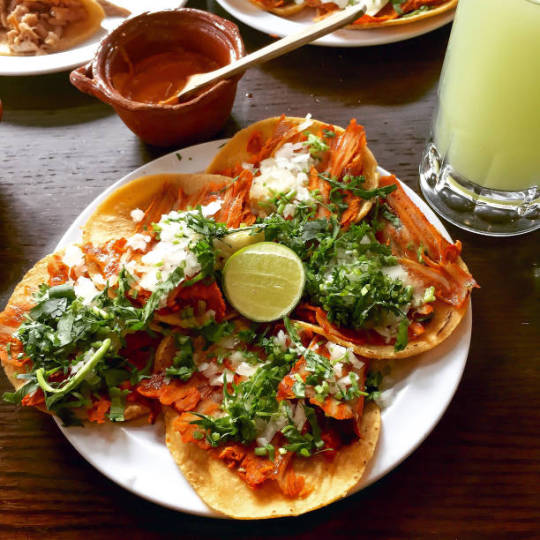

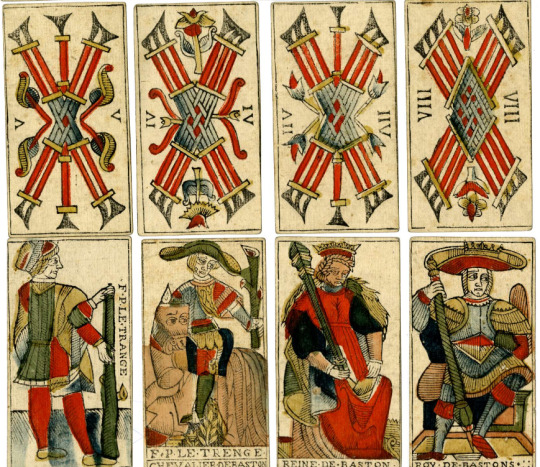
Now, I'm the first to admit it, Pamela and Arthur's deck changed not only cartomancy but the perception of the entire world around it. Pamela's exquisite artistry and innovative idea of illustrating the minor arcana made it BY FAR the most important tarot deck of all times. HONOR TO WHOM HONOR IS DUE. And as cartomants we owe respect to the deck (and its creators) for literally bringing cartomancy into modernity. It is directly responsible for the fact that we are discussing this topic today and for all the extraordinary artistic madness of hundreds and hundreds of new decks that are printed and designed.
HOWEVER. The deck has HUGE and unacceptable errors that split the modern study of tarot into two and a thousand pieces, but I have to give their case justice. Arthur Edward Waite and Pamela Colman Smith were members of the Golden Dawn and their plan was to create a tarot deck with the ritual, sacred and symbolic associations of the order.
Is it their fault that their niche deck escaped containment? Of course not. We are used to working with luck, it is our territory, so it's no surprise that the mass popularization of tarot (and this deck in particular) came with an equally destructive counterpart. I can't blame them, Geek culture (and fandom in general) has to live every day with the Horrors and Pleasures of seeing their niche content, intended for a few, be dismembered and multiplied in the hyper-globalized sphere of "normie" culture.
I'm in several tarot groups on Facebook and the question every day is: What is the best deck for beginners? And the truth is that I don't know what to answer.
I have read with both systems and right now, my little TdM is my tool par excellence. I admit that the "dry" art of the minor arcana and the deck in general is an acquired taste. There are such beautiful and impressive decks out there that I completely understand why not many decide to stick with the tarot world's equivalent of vanilla triple condom missionary sex (although this is an aesthetic issue that is being called into question with new decks).
What I don't understand is the conception that the Marseille tarot is more complicated than the RWS!
If the TdM school is characterized (or could be characterized, I curse you Jodorowsky!) by austerity and lack of expressiveness, the RWS school is characterized by paranoia and the pseudo-complexity of symbols and structures.
By "paranoia" I mean the obssesive search for hidden meanings or mystical secrets and messages. Usually where there are none.
Reading with an RWS deck for the first time is a horrible experience and we are very much to blame for scaring away beginner readers. Assuming that you have survived the countless myths that all decks carry (it must be a gift, it's satanic, don't read on Sunday) you realize that you don't know how to read it. Each of the 78 cards has a different scene and all of them are full of symbols. What do the pomegranates on the High Priestess' veil mean? What the fuck is a High Priestess? Why do some cards have names and others don't??? It is an aggressive sea of information that ends up drowning anyone.
But that is not all! Now comes the plot twist and it turns out that not only you have to learn 78 meanings (in equally confusing websites or books) but that each card has a different meaning in reverse. 156 cards in total, each with a series of extensive meanings for love, family, work, money, health, etc. And as if that weren't enough, the spreads look like this:
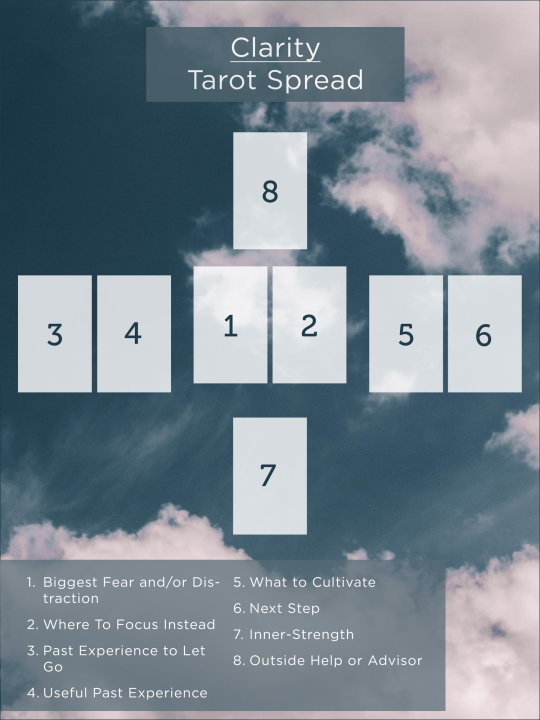
Where each of the positions has an extra layer of meaning. This is not a specific problem of the RWS but we have long since passed that point, we only have to manage the disaster that its globalization carried.
The big problem with RWS and its school of thought is that in the process of making a more intuitive tool, it became a creature that feeds on the paranoia of its readers. It is an excellent deck to spread on the table and read lightly: The faces and situation of the characters are clear, the art is friendly and reading is easy. A 10 of swords is an obvious image of failure and pain, the 3 of cups inspires joy and suggests party and friends. It is a tool that fuses the allegorical advantages of a classic tarot deck with the everyday fluidity of a sibyl or an oracle. It has nothing to envy an Italian Sibyl or a Kipper deck.
It is human, intuitive and beautiful.
The problem comes when we want to extract more of it. Being a ritual deck, it is impregnated from top to bottom with numerological, astrological, Hebrew, Egyptian, etc. associations of magic and occultism derived from the not very convincing knowledge of the GOLDEN DAWN. It was not intended to be a deck for common and mundane divination use.
The average casual cartomancer knows the meanings of the cards because they read them on a website (and hopefully in a book/video). Most people don't know who Pixie or Arthur Waite is and probably haven't read any of their original texts. What's worse, there's a good chance you're not a member of the Golden Dawn and you also don't know that previous decks exist. All those symbols and associations that served an original purpose become a mental burden when reading with it.
What good does it do me to know that the coins in the 10 of coins represent the Tree of Life or that the Magician transfers the energies of the High to the Low, alluding to one of the magical premises of the Tabula Smaragdina ("As above, so below") when what I want to know IS IF MY EX WOULD GET BACK TO ME???
A lot of information but useless information. And that's still the best case scenario. At worst…
The incomplete fusion of poorly understood mystical allusions, an intuitive deck loosely anchored in classical cartomancy and the whitewashed psychology of the New Age in search of alternative therapies gave birth to a monster: EVOLUTIONARY TAROT. (But that's another story. The evolutionary tarot isn't really bad in its conception, but the road to Hell is paved in good intentions ahhasha. I have already a post about it).
If the RWS school got rid of the complicated spreads, the reversed cards, the useless lists of meanings, the obsession with symbols and FOCUSED on Pixie's illustrations and read Arthur's original texts it would be easier to use its tool without losing their marbles in the process, but that is going against the current and not analyzing the existing reality.


By illustrating the minor arcana, the deck became more friendly but in exchange it lost the hierarchy of the major arcana. In the image there are 3 major and 3 minor arcana, but visually they have the same weight and therefore, the same relevance when this SHOULD NOT HAPPEN. The Sun cannot be on the same level as a 10 of Swords no matter how bloody the card is.
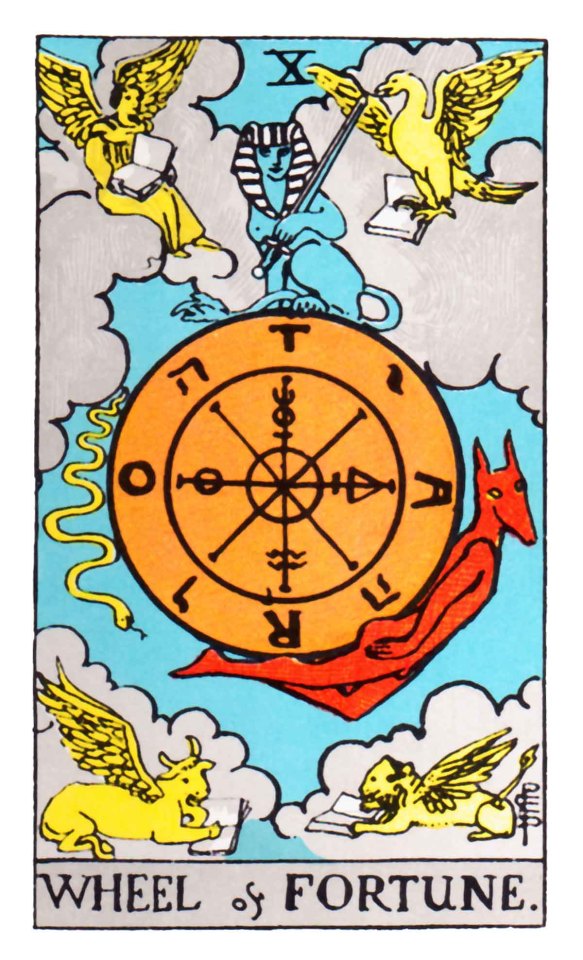

Another situation: Let's focus on the Wheel card. I already made a post about it that you can find on my blog, but in summary there is a HUGE difference between this arcane in the RWS and the TdM. Which is saying a lot when the TdM's Wheel is itself extremely defective.
If the RWS tarot does not respect the hierarchy of the arcana, many of them are "badly" represented, or at least incomplete without the contribution of Arthur and the Golden Dawn, it does not have a divinatory purpose and illustrates its minor arcana based on external sources such as Etteilla, numerology, astrology, etc… CAN WE CONTINUE CONSIDERING IT A TAROT?
I suspect not and this is not a bad thing. On the contrary, it has an extraordinary place as a multipurpose oracle that could be developed more freely without the pretension of wanting to be (without actually being) a tarot deck.
And yet, the Marseille tarot is the one that has the reputation of being MOST COMPLICATED!!!???
As I said before, honor to whom honor is due and therefore, dishonor to whom dishonor is deserved ahsahsa. Alejandro Jodorowsky did an enormous job to popularize the TdM deck but he missed a VERY SMALL detail like other important tarot figures such as Papus and Eliphas Levi:
The PARANOIA.
I love you friends, but if I hear someone say again that the Tarot of Marseille holds mystical secrets in its geometry, I'm gonna kill someone ahsahsa. ENOUGH, for mercy's sake! Many beginners infected with the mystical paranoia of the RWS come to the classic decks with the same perception of hermetic and conspiratorial symbology, which is fueled by the LITERAL search for easter eggs and hidden meanings popularized by the aforementioned characters. Sometimes two cups are TWO CUPS and 3 swords are THREE SWORDS. There are no secret codes involved but who seeks finds and sooner or later you will end up paying more attention to the leaves on the decorations or the color of the shoes than to the FUCKING CARD ITSELF.
This manifests, for example, in another of the major problems that both systems share:
CUPS ≠ WATER WANDS/BATONS ≠ FIRE COINS ≠ EARTH SWORDS ≠ AIR
REPEAT AFTER ME: SUITS ARE NOT ELEMENTS.
Many readers tend to automatically replace the objects in the cards with the later elemental associations. When we see 6 swords in a classic deck, we are not talking about air, MUCH LESS about the meaning that Etteilla or Arthur Waite gave to the card. 6 swords are more swords than you want your enemy to have and since they are swords and not AIR, their function is simply to cause you a lot of damage and pain. Bad omen.
THERE IS NO MYSTERY.
We can add another layer of information, helped by numerology and adjacent cards, but we must never lose sight of the SUPERIOR hierarchy of this obvious and clear message in favor of DETAILS such as the ornaments and the distribution of the swords on the card.
The biggest danger of the RWS system is being overloaded with useless information and ridiculously complicated systems. The biggest danger of the TdM system is not seeing the MESSAGE by focusing too much on absurd details.
The Marseille tarot has MANY flaws as it is a poor copy of Italian decks. Curiously, its situation is almost identical to that of the RWS. By reaching a globalized impression in Europe, the forgivable mistakes of a niche deck spread far and wide. Even so, it preserves the characteristic simplicity of classic decks: You can perfectly distinguish a major arcana from the rest and give it the place it deserves in a reading. The allegories have errors but they maintain a clear and understandable representation for the most part (I also have a post about it).
Many TdM readers do not use inverted cards and free reading on tableaus and strings are the favorite. If we ignore the symbolic paranoia of various authors, focus on the cards in front of us and their allegorical meanings, we have a VERY EASY TO READ tool. It is not as comfortable or friendly as a RWS but it is definitely more free and concrete. Less noise, less chaos. Straight to the point.
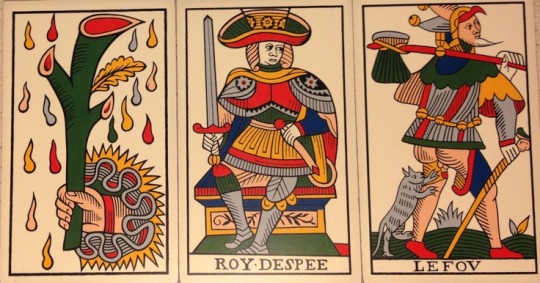
I'm not going to lie to you either, anyone who has used a TdM knows that no matter how skilled the reader is, the deck cannot be compared to a sibilla or the RWS when the topic is everyday and mundane divination. It is a dry, direct deck, but little theatrical or gossipy compared to other decks. In the same way, if we ask a sibyl complex and imaginative questions we will have the same result as if we asked the vegetable seller at the market.
Much of the debate comes down to knowing what your need is and your appropriate tool.
In conclusion:
I think the RWS system is unnecessarily complicated, which undermines its great advantage: Being able to read the deck intuitively without having to study it. I think that if it completely abandoned its desire to be a tarot and became an independent deck of illustrations, it would be an exquisite oracle.
The TdM is not the sharpest knife in the arsenal of classic decks, but it is a very easy tarot deck to learn and use if we ignore the symbolic paranoia and limiting meanings of some authors. It is (like all classic decks) a deck with the limitations of tarot, so instead of forcing it to answer all the questions, sometimes it is better to know when to use another oracle.
35 notes
·
View notes
Text
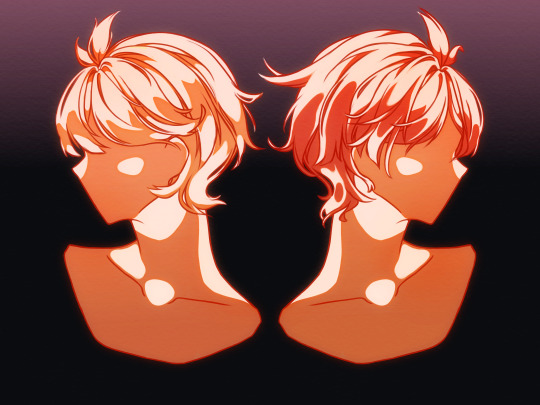
💐"Creación y Destrucción, las dos caras de una misma moneda"
Me gusta pensar que los sentimientos de auto-desprecio y envidia estuvieron muy presentes en la existencia de estos dos.
Wu se odiaba a si mismo por no ser fuerte y valiente como su hermano mayor, la gente lo trataba como un bebé llorón, Garmadon se odiaba así mismo por no ser tranquilo y pacifico como a su hermano menor, la gente lo trataba como un monstruo.
Incluso en temas de auto-descubrimiento, identidad y orientación, la falta de información (Junto con la ignorancia del pueblo) terminaba empeorando mas la situación para ellos, ocasionando que ambos construyeran una identidad falsa que tenia la intención de eliminar todas sus "Imperfecciones", después de todo:
"¿Como se atreven los hijos del Primer Maestro del Spinjitzu no ser iguales a su padre, y sobretodo, querer tener un lado humano?"
Debido a esta mentalidad y la falta de apoyo, entre ellos surgió la idea errónea de que solo uno era el "Afortunado" del dúo, sin darse cuenta de que ambos se ahogaban en la misma miseria.
(Es normal si al dibujo le encuentras algunos fallos, sobretodo en la iluminación, quería experimentar un poco con la ayuda de un pequeño tutorial que encontré por ahí, aunque debo admitir que me gusto como quedo el cabello, fue la parte que mas disfrute dibujar, en fin, los consejos que quieran darme son bienvenidos).
✨"Creation and Destruction, the two sides of the same coin".
I like to think that feelings of self-loathing and envy were very present in the existence of these two.
Wu hated himself for not being strong and brave like his older brother, people treated him like a cry baby, Garmadon hated himself for not being calm and peaceful like his younger brother, people treated him like a monster.
Even in matters of self-discovery, identity and orientation, the lack of information (along with the ignorance of the people) ended up making the situation worse for them, causing them both to construct a false identity that was intended to eliminate all their "Imperfections" after all:
"How dare the children of the First Spinjitzu Master not be equal to their father, and above all, want to have a human side?"
Because of this mentality and lack of support, among them arose the misconception that only one was the "Lucky One" of the duo, not realizing that both were drowning in the same misery.
(It's normal if you find some flaws in the drawing, especially in the lighting, I wanted to experiment a little with the help of a small tutorial I found out there, although I must admit that I liked how the hair was, it was the part I enjoyed drawing the most, anyway, any advice you want to give me is welcome)
#art#artwork#digital art#fanart#lego ninjago#ninjago#master wu#ninjago wu#sensei wu#ninjago art#ninjago fanart#lord garmadon#ninjago lord garmadon#young wu#young garmadon#garmadon fanart#spinjitzu brothers#krita#ninjago headcanons
122 notes
·
View notes